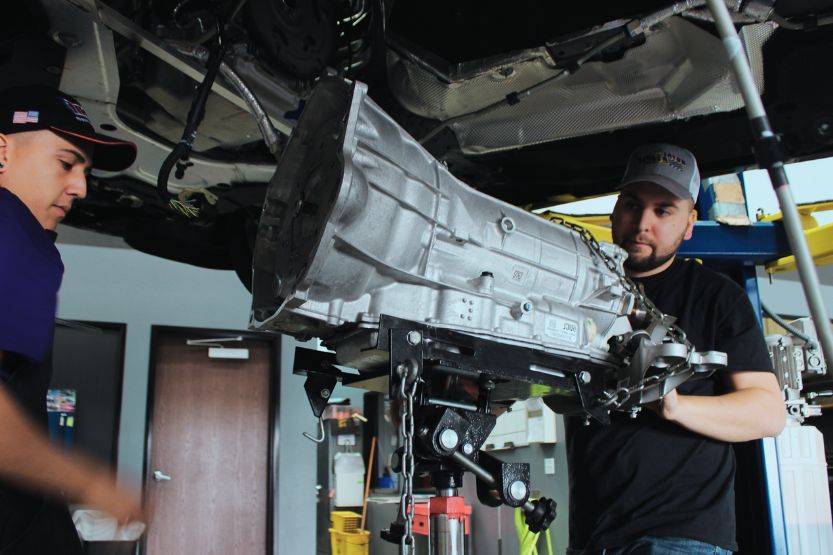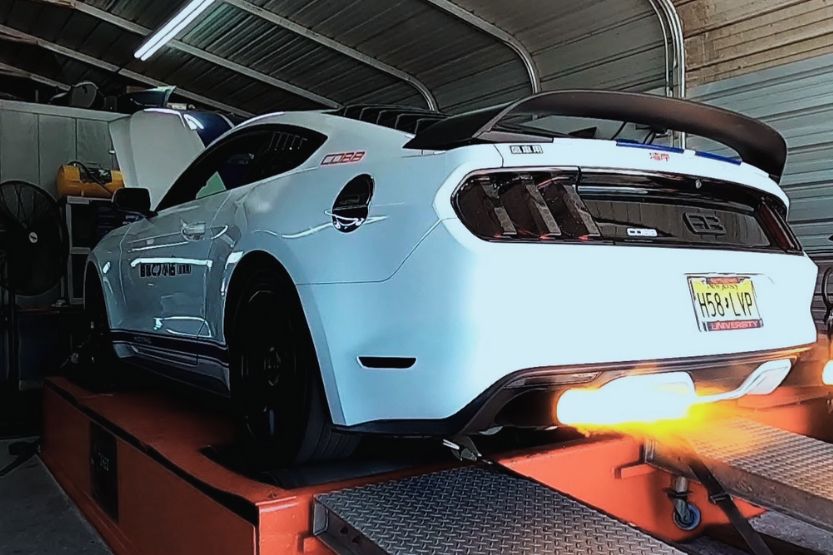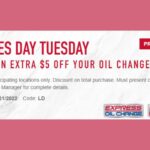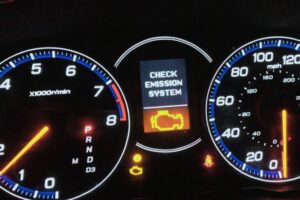If you are not a car enthusiast, you probably have not heard about bolt-ons. Bolt-ons can improve a vehicle’s performance but also void car warranties. I’ll discuss bolt-ons: meaning, list – complete guide in this article.
In the case of vehicles, bolt-ons refer to the modifications that remove a factory or stock part and replace it with aftermarket parts. Basic bolt-ons don’t need to use particular tools or have an engine tune-up. You can also easily remove the bolt-ons if you want to restore your car to its stock form.
In the world of car enthusiasts, there are also full bolt-ons. This type of bolt-on is a total and complete upgrade of a vehicle. It involves removing factory parts and then bolting on or replacing them with aftermarket parts.
Read on to learn more about the meaning of bolt-ons and the usual list of bolt-ons that car modifiers add to their vehicles.
Bolt-Ons Meaning

Refer to the Removal of Factory Parts
In basic terms, bolt-ons are things or parts added to the main product. What are bolt-ons for cars? When applied to vehicles, they refer to the modifications that remove factory parts and replace them with aftermarket parts.
You don’t need special tools to do vehicle bolt-ons or have your engine tuned up. If you get tired of the mods or see that they are not as effective as expected, you can un-bolt them and restore your car to stock.
A Full Bolt-on Refers to a Complete Upgrade
Some car enthusiasts do full bolt-ons on their vehicles. A full bolt-on refers to a total or complete upgrade of your car. This means you are removing all its stock parts and replacing them with aftermarket parts that you have bought from independent suppliers.
Most of those who do car bolt-ons do not need to tune up their vehicles to make them run properly. However, their engines can quickly reach the desired torque level.
If you want to have the advantage of the enhanced capabilities of generating more power, then that’s when you need to have your engine tuned up.
Increased the Engine’s Horsepower by 2%
By adding bolt-ons to their vehicles, some people feel that they have increased the horsepower of their engines by 2% and increased the torque by about 4%. Some examples of bolt-ons are wheels, coil overs, exhaust, and sway bars.
What Are Full Bolt-Ons?
Stock Part Removal
As I have already mentioned, full bolt-ons are total upgrades done on vehicles. If this is what the vehicle owner wants for their car, they need to remove all the stock parts and replace them with ‘bolt-on’ aftermarket parts.
Modders Differ in What They Consider Full Bolt-ons
Modders differ in what they call full bolt-ons. As such, there are different levels of bolt-ons, which results in controversies as to what a complete bolt-on vehicle is over a car that is only partially modified.
Unnecessary Mods
In another vein, bolt-ons can also refer to unnecessary mods for aesthetic purposes or to enhance performance because vehicle owners intentionally remove some parts before their vehicles are given regular maintenance.
These bolt-ons are usually done on the vehicle exteriors. They don’t require professional tools, knowledge, or skill. Examples are sway bars, differing wheels, coil overs, and exhaust. The usual bolt-ons are for aesthetic and optional purposes.
Turbo Controversy
There’s a controversy regarding turbo. Since it can be added to a vehicle that does not have it in stock, some consider it a bolt-on. Some car enthusiasts say that’s a wrong assumption.
While it is technically bolted on the vehicle, adding a turbocharger to a vehicle requires extensive knowledge and working with different car parts.
In contrast, a bolt-on refers to just a one-and-done car part bolted to a vehicle. It does not require comprehensive knowledge and skill. The work also does not involve other additional car parts. And in many cases, it is done purely for aesthetic purposes.
A Common Full Bolt-on Includes Complete Exhaust Modifications
Full bolt-ons typically refer to a vehicle with several bolt-ons. An example would be the full bolt-ons for a Mustang.
People agree that, in most cases, a full bolt-on includes complete exhaust modifications. But the specific parts vary depending on the intent of the vehicle owner.
Some think a vehicle with an excess of added parts is a full-bolt-on vehicle. But others believe specific car functions must be covered or composed of bolt-on parts for the vehicle to be fully bolt-on.
Standard Features Included in a Complete Bolt-on
So, the parts that comprise a complete bolt-on vary widely from modder to modder. Even then, there seems to be a consensus among modders regarding what features can be included in a complete bolt-on. This is the exhaust system, consisting of the intake manifold, the headers, and the air intake.
Is Full Bolt-On Equal to Stage Tuning?
Stage Tuning Involves Modification of Car Parts Installed as a Set
Another type of modification that car enthusiasts usually confuse with full bolt-ons is stage tuning. Some of them are asking if the two are just the same. It seems that the answer can either be yes or no.
Stage tuning also involves the modification of car parts, which are usually installed as a set. So, in that sense, it is also a kind of bolt-on thing.
Stage Tuning Involves Engine Remapping
The main difference between the two is that stage tuning often involves engine remapping, which is technically and physically not a part of a bolt-on procedure.
In stage tuning, you will hear those who are into this thing say, “I have a full stage 2 car,” or “My clutch is already staged 2.”
Car Companies Offer Stage 1, 2, and 3 Tuning Services
Car tuning companies also offer stage 1, 2, and 3 tuning services. A particular step indicates the amount of performance that its parts provide. Let me explain:
Stage 1
Stage 1 typically involves the removal and replacement of essential factory parts. These can include air intakes and exhausts.
Stage 2
Stage 2 usually removes and replaces more complicated parts with aftermarket ones offering higher performance. These may include the clutch, intercooler, intake, and exhaust downpipe. Typically stage 2 tuning aims to replace stock car parts which are the car’s weak points.
Stage 3
Stage 3 typically removes and replaces critical parts of the car, such as the engine internals, pumps, and fuel injectors. It may involve the addition of a turbocharger or even a supercharger if the vehicle can take it.
Again, what does a car with bolt-ons mean? Bolt-on modifications involve factory part removal and replacement with an aftermarket part. These mods do not require special tools or engine tuning. You can easily remove said part if you want to revert the change on your car.
Full Bolt-On List

What car components are usually included in a full-bolt on? As you may have guessed, and since there is a wide variety of beliefs and opinions regarding this matter, no ultimate full bolt-ons list exists.
The definition of full bolt-ons is very vague. The word is a hotbed of arguments. However, we can set a standard list of parts that can constitute a complete bolt-on vehicle. Typically, here are the components that can make a car a complete bolt-on:
1. High-Performance Shocks/Springs/Coil-Over Springs
Modders add high-performance shocks, so their vehicles can maintain contact with the road at higher speeds and on bumps. However, the steering feel will be tougher, and the ride quality will be stiffer.
Shock absorber kits with springs and shock can slightly lower a car’s ride height. This kit usually costs around $1,500.
2. Less Restrictive Cold-Air Intake
This bolt-on component will make your engine run more efficiently, especially when driving at higher speeds. However, this component will also make the intake noise a bit louder and increase your maintenance requirements.
By using the type of cold-air intake, you will allow cooler ambient air inside the engine. It will help the engine produce more power than usual. This component usually costs somewhere around $480.
3. Wider Wheels and Tires
Modders bolt on these wheels and tires to improve their vehicle’s turn-in precision, road-holding, and braking capabilities.
However, these tires and wheels add extra weight to the vehicle, which can overwhelm its springs and shock damping. As a result, tracking stability on the loose surface is reduced.
Using plus-size wheels and tires is the easiest way to improve a vehicle’s handling. This means reducing the sidewall height proportionately and increasing the wheel diameter and width.
It will ensure that you can keep the same diameter with a wider tire. The cost for this bolt-on component is about $1,300.
4. Stiffer Motor Mounts
Modders add firmer and tougher motor mounts to their vehicles to enhance handling precision and improve the engine response. However, the driveline will also have some vibration and increased engine noise. These bolt-on components can cost at least $198 a pair.
5. Adjustable Top Strut Mounts, Chassis Braces
Modders add these bolt-on components to give their vehicles more excellent alignment range. They also allow fine-tuning so their cars can have better road-holding capabilities. However, installing these bolt-ons will create more road noise coming through the vehicle’s body.
As for the cost, one pair of adjustable mounts for a BMW 3 Series is priced at around $400.
6. Larger Anti-Roll Bars
Modders also add bigger anti-roll bars to get their vehicles to maintain the correct level with the road. This optimizes their tires’ contact patch.
However, bumps on one side of their vehicles are often transferred to the vehicle’s other side. This results in a rougher ride. These bolt-ons are usually sold in kits at less than $400.
7. Performance Seats
Modders add performance seats to their vehicles to get more body support. This results in improved pedal control and better steering. However, this bolt-on can also produce bumps that could shake the car’s internal parts.
Some car enthusiasts discovered that racing-style performance seats could be comfortable if they can support the body in the right places.
However, they can also hold your body as g-forces act on your car. This could mean that ride comfort is compromised. As for the cost, a good branded performance seat costs about $2,000.
8. High-Temperature Brake Pads
Modders also love to install high-temperature brake pads in their vehicles. These brake pads offer less fade while doing heavy braking and quicker deceleration. However, they often produce squealing noise, and their braking performance suffers.
There are high-performance brake pads that are designed for street cars. They cost around $250 for one set.
9. Stainless Steel Braided Brake Lines
Some modders also like to bolt on stainless steel braided brake lines to their vehicles because they offer faster brake response. Using such brake lines also lessens the chances of ruptured lines. However, these types of brake lines are expensive.
When you use these brake lines, the pressure you put on the brake pedal will be transferred to the brake caliper instead of the rubber brake line. One set of these brake lines is priced at around $100.
10. Bigger Diameter Catalyst-Back Exhaust
Another bolt-on that modders like to install in their vehicles is catalyst-back exhaust with larger diameters. This type of exhaust ensures that engine operation will be more efficient at high speeds. The downside to these types of the exhaust is they create louder engine noise.
However, there are already tech advances in designing exhaust systems that do not produce excessive noise even after opening up the exhaust pipes. They call it Reflective Sound Cancellation. What it does not promise is a low price. An RSC system usually costs around $1,169.
Frequently Asked Questions

If this is the first time you have heard of the word “bolt-ons,” you probably have many questions in your mind. The answers to your questions could be one of the answers enumerated below:
What Does Bolt on Mean?
The term bolt-on is used in business, computers, and cars. When it comes to cars or vehicles, bolt-ons refer to the parts, components, or kits that are added to or bolted to the main product, which is a car or a vehicle. That is its primary meaning.
Who Would Like to Get Bolt-ons to Their Vehicles?
Many car enthusiasts are not satisfied with the stock cars they buy from the factory of car manufacturers. They would like to enhance the aesthetics and performances of their factory-built vehicles.
These people are called modders or car modifiers. For one reason, they are unsatisfied with the cars as they roll out from the car factories.
So, they add bolt-ons to their cars to satisfy their tastes and needs. The need could be for enhanced beauty, or it could be for increased performance.
How Do They Accomplish a Bolt-on?
The typical process is straightforward. Modders remove the ‘unwanted’ car part or component and then replace that part or component by bolting in an aftermarket car part that they bought from an independent car parts seller.
What Is Meant by Full Bolt-ons?
Modders consider full bolt-ons as total upgrades to a vehicle. A complete bolt-on typically involves the removal of several stock parts and replacing them or bolting in performance-oriented or aesthetically oriented aftermarket parts.
Since full bolt-on usually involves complete systems, they take a lot of time to complete and are very expensive. They are also very complicated. Only those with the skills, dedication, and enough money should undertake full bolt-ons.
What Are the Usual Bolt-ons That Modders Perform?
There are about ten bolt-ons that modders usually do to their vehicles. These ten bolt-ons are the following:
- High-performance shocks/springs/coil-over springs
- The less restrictive cold-air intake
- Wider wheels and tires
- Stiffer motor mounts
- Adjustable top strut mounts, chassis braces
- Larger anti-roll bars
- Performance seats
- High-temperature brake pads
- Stainless steel braided brake lines
- Bigger diameter catalyst-back exhaust
Is There a Standard Way for Bolt-ons?
Performing bolt-ons on vehicles can vary very widely. It depends on the person’s intention or the vehicle owner performing the bolt-on. As such, there is no standard way of doing it.
The closest you can get to a standard bolt-on is the removal and replacement of the wheels, the coil overs, the exhaust, and the sway bars. But modders are different from each other. They have different styles, tastes, and needs. And so will the bolt-ons that they will perform on their vehicles.
Do Bolt-ons Void Car Warranties?
Yes, in most cases, they do. The primary reason is that car manufacturers warranty the parts that go into the cars they sell.
If you replace a stock part with an aftermarket part that you bought from an independent seller, you practically did not follow what they prescribed in the warranty agreement you signed when you purchased the car.
So, it is best to check with the dealer before doing any bolt-on to your car if it is still under warranty.
In Closing: What Is the Meaning of Bolt-Ons
The basic meaning of bolt-on is adding a part to the main product. Regarding vehicles, bolt-ons mean removing a stock part of a car and replacing it with an aftermarket part.
To do bolt-ons, you don’t need special tools nor have your engine tuned up. You can quickly restore your car to stock once if you don’t like the effects of the bolt-ons.
Bolt-ons are performed by car enthusiasts or those who are called modders. There is no standard bolt-on since modders are different from each other. A complete bolt-on to one modder is just a partial bolt-on to another. That’s how varied this field of endeavor is.


![Interference Engine List [and Non-Interference Engine List] interference engine list](https://roadsumo.com/wp-content/uploads/2021/06/interference-engine-list-150x150.jpg)


![Walmart Auto Center Prices [Full List] Walmart Auto Center Prices](https://roadsumo.com/wp-content/uploads/2022/07/Walmart-Auto-Center-prices-150x150.jpg)
![AutoZone Services and Prices [Full List] autozone services and prices](https://roadsumo.com/wp-content/uploads/2022/10/Autozone-services-and-prices-150x150.jpg)

![Read more about the article Car Squeaking When Driving [7 Causes]](https://roadsumo.com/wp-content/uploads/2022/12/car-squeaking-when-driving-300x200.jpg)
![Read more about the article Brake Pedal Goes to Floor When Engine Running [How to Fix]](https://roadsumo.com/wp-content/uploads/2020/10/brake-pedal-goes-to-floor-when-engine-running-e1601695963392-300x200.jpg)